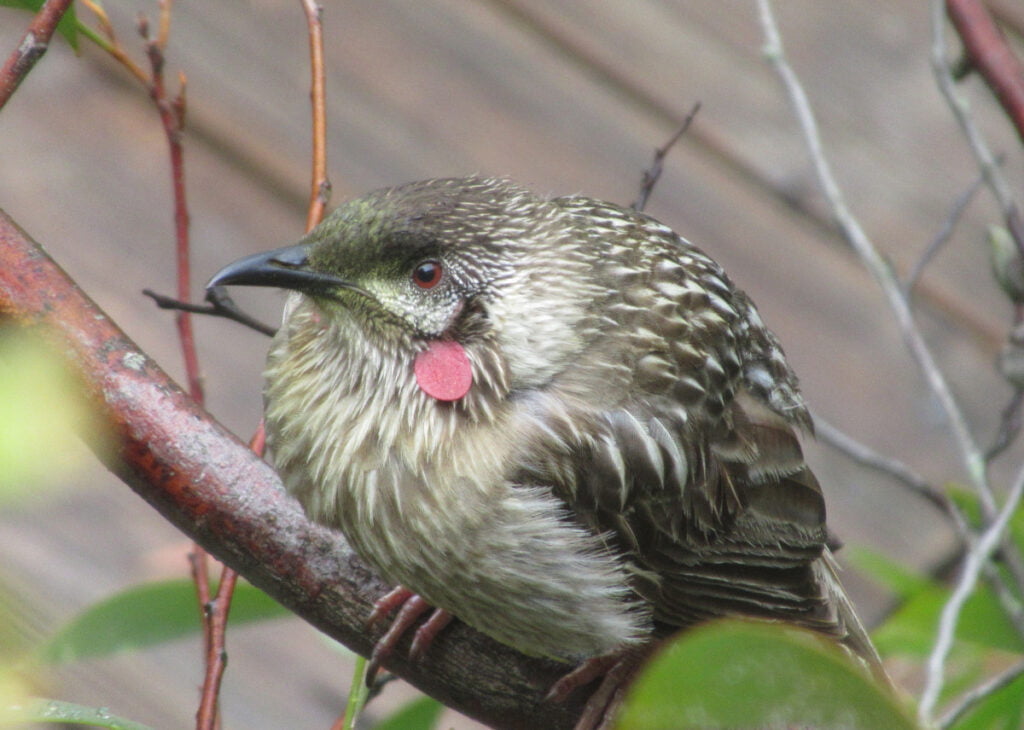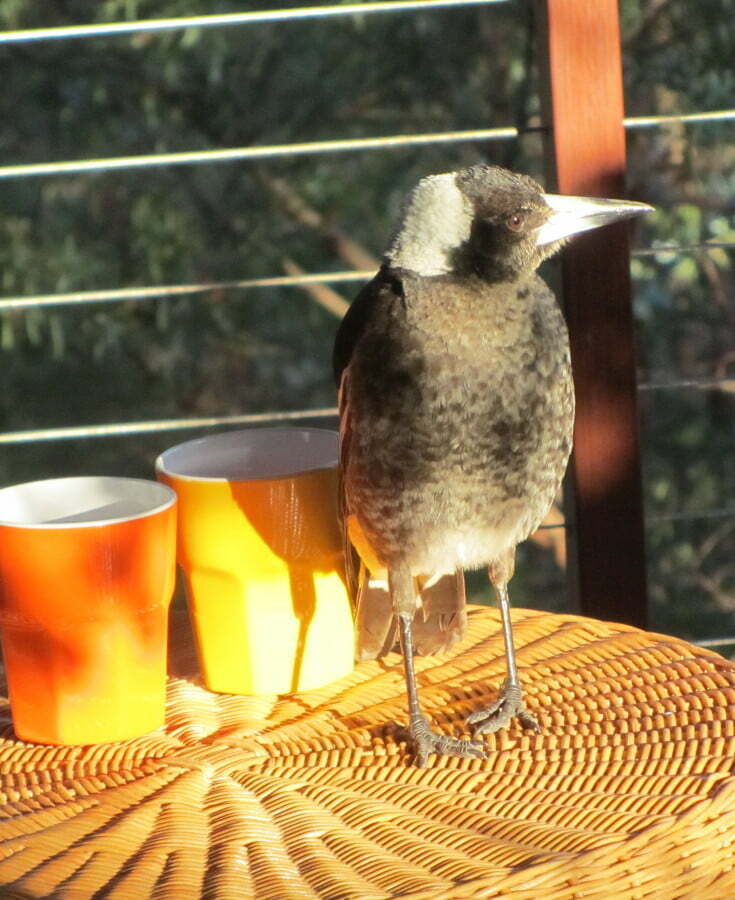Hands up if you feed wild birds in your garden?
by Ewa Meyer, EcoUpdate editor and occasional bird feeder.
Don’t feel guilty – you’re not the only one! It is estimated that at least one in three Australian households feed birds regularly or occasionally, whether they admit it or not!
I decided to write a few words about this subject because it is an area where ongoing research is increasingly challenging the established Australian view that all feeding is wrong. Consider perhaps if undertaken in a responsible way it can lead to a closer co-existence between people and wildlife, to the benefit of both.
The focus of this article is solely on private gardens, a place we live where we can take personal responsibility for our actions. The undeniably valid reasons for banning the uncontrolled feeding of wildlife in public places such as national parks and tourist facilities are more clear cut and are excluded from this discussion. The supplementary feeding of wild mammals or reptiles is a different kettle of fish – reserved for another time.
I hope to present a balanced discussion based on 30 years of personal observations and, using research findings from Griffith University’s Dr Darryl Jones and his team, provide you with some thoughts about this contentious issue here in Australia to help you decide if and how you can feed responsibly.
My Feeding Background
When I arrived in Australia over 30 years ago, I was astounded by the sheer number of birds in suburban Brisbane and even the city parks – such beauty, colour and personality I had never encountered elsewhere. Not many places in the world can lay claim to such diversity of bird species in an urbanised environment – the large network of creek systems and their catchment care groups being a major factor in protecting and enhancing wildlife habitats.
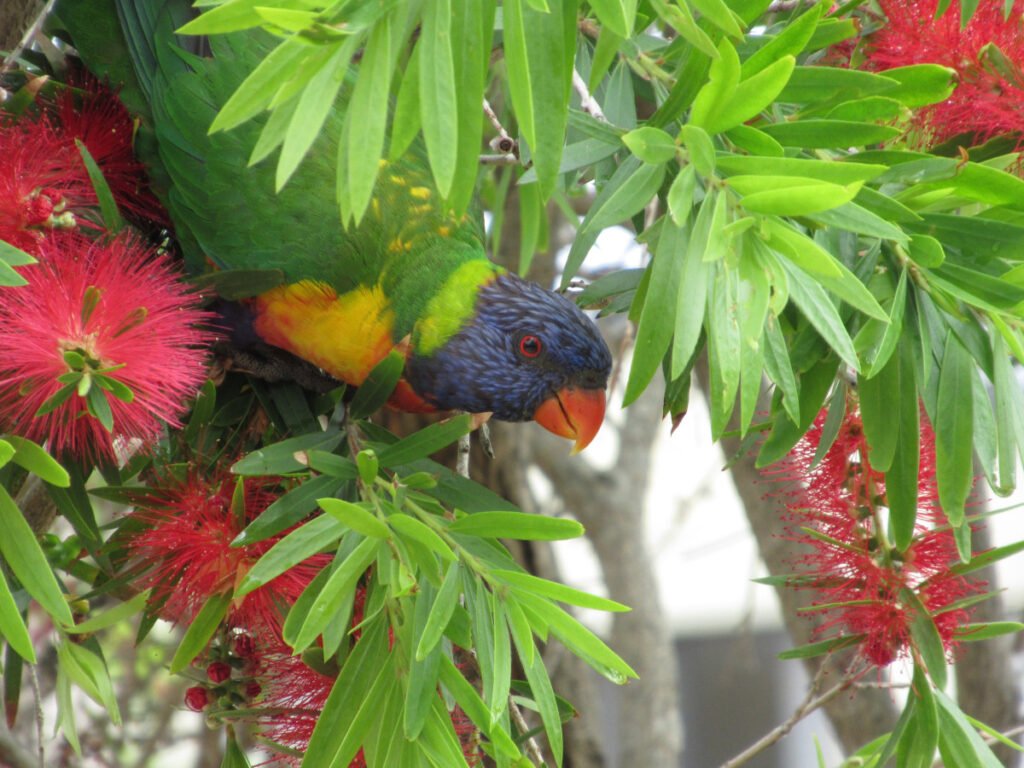
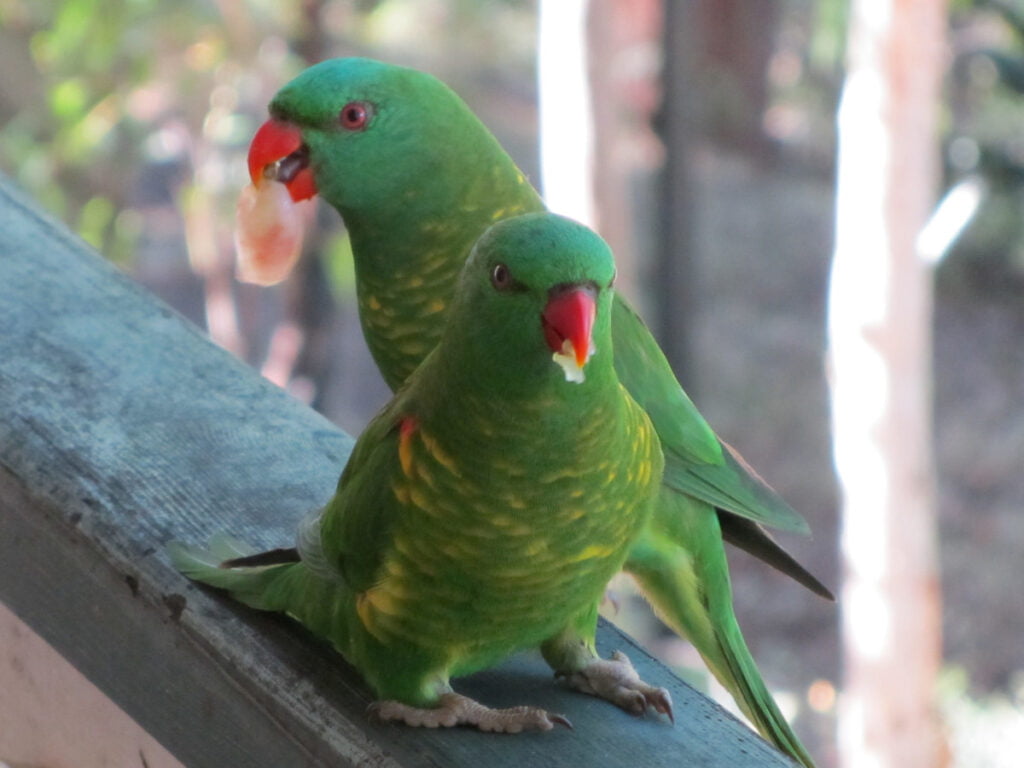
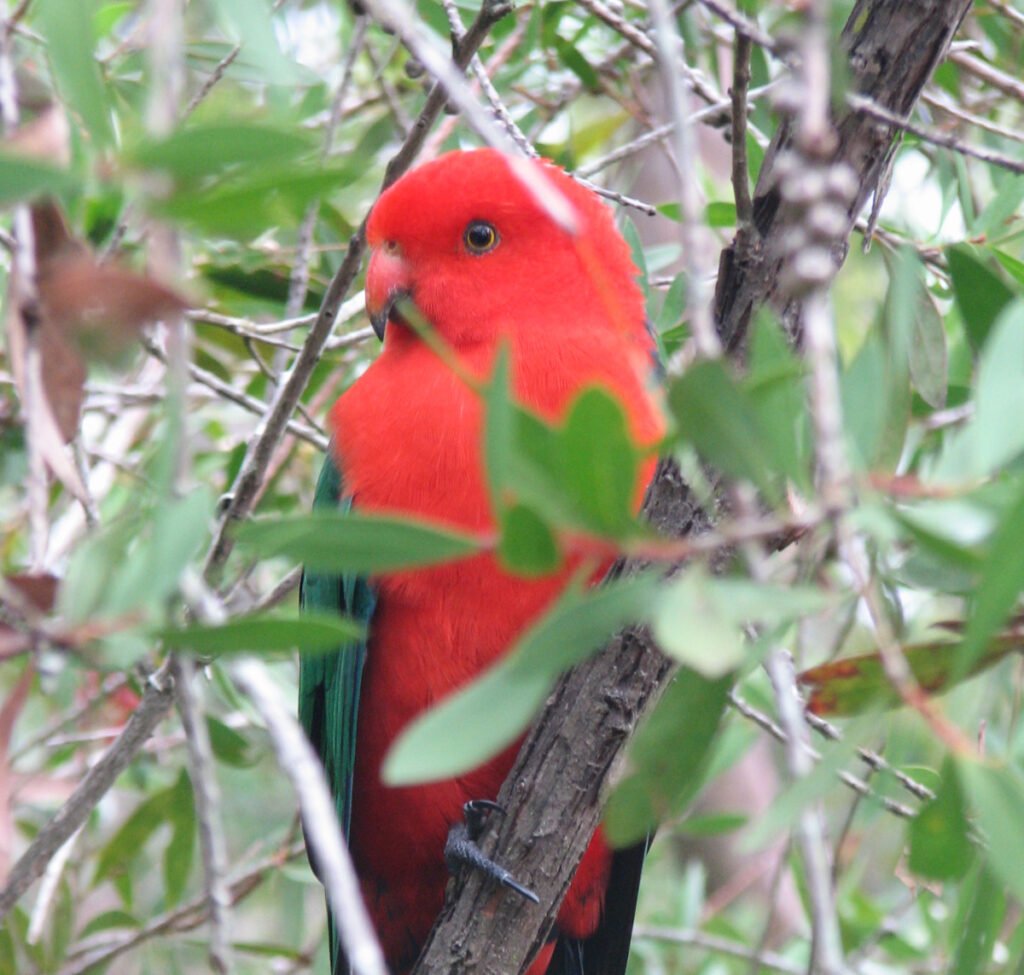
In the UK, people are actively encouraged to feed our feathered friends and not just through the cold winter months. In North America, Cornell Lab run Project Feederwatch where you can sign up to courses and the contribution of everyday citizen scientists to bird data is massive.
So why in Australia, is this practice seriously frowned upon? Is it because we don’t have a widespread snow season? In my early days living in Brisbane, I couldn’t find any information about this subject – the internet was barely off the ground and I didn’t know any bird enthusiasts.
Almost immediately I started feeding the rainbow and scaly-breasted lorikeets, the magpies, butcherbirds and, unfortunately also the vandals of the bird world – sulphur-crested cockatoos.
Seeing the birds in my garden and on my verandah each day brought me closer to nature and unbeknown at the time – on my way to becoming a bona fide conservationist, a passion I still pursue.
As I became more involved in environmental issues, and worked in that field, I discovered that feeding birds in Australia was strongly discouraged by conservationists, wildlife carers and bird groups alike. So for years, I strongly supported that view and was content to observe the birds from afar.
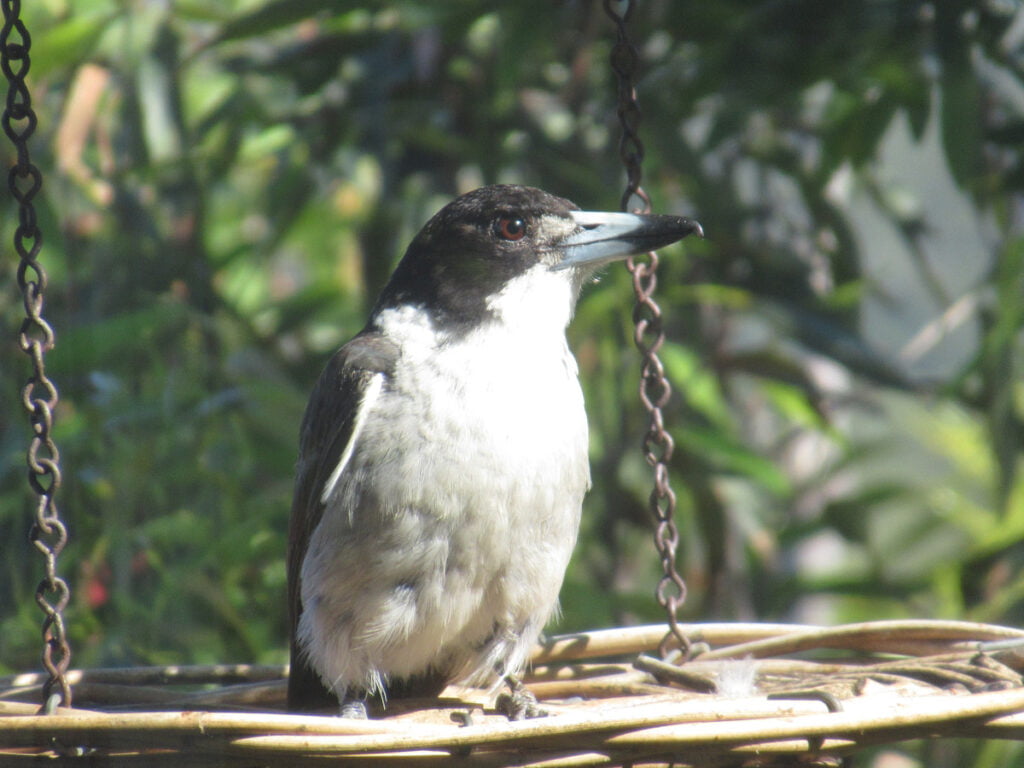
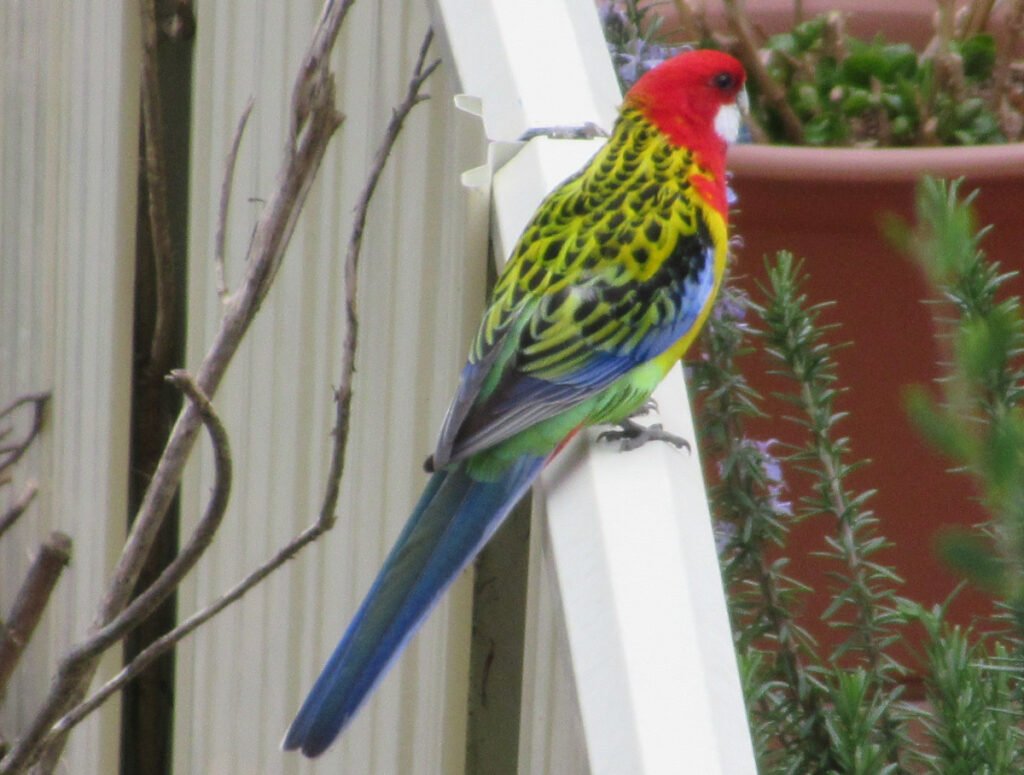
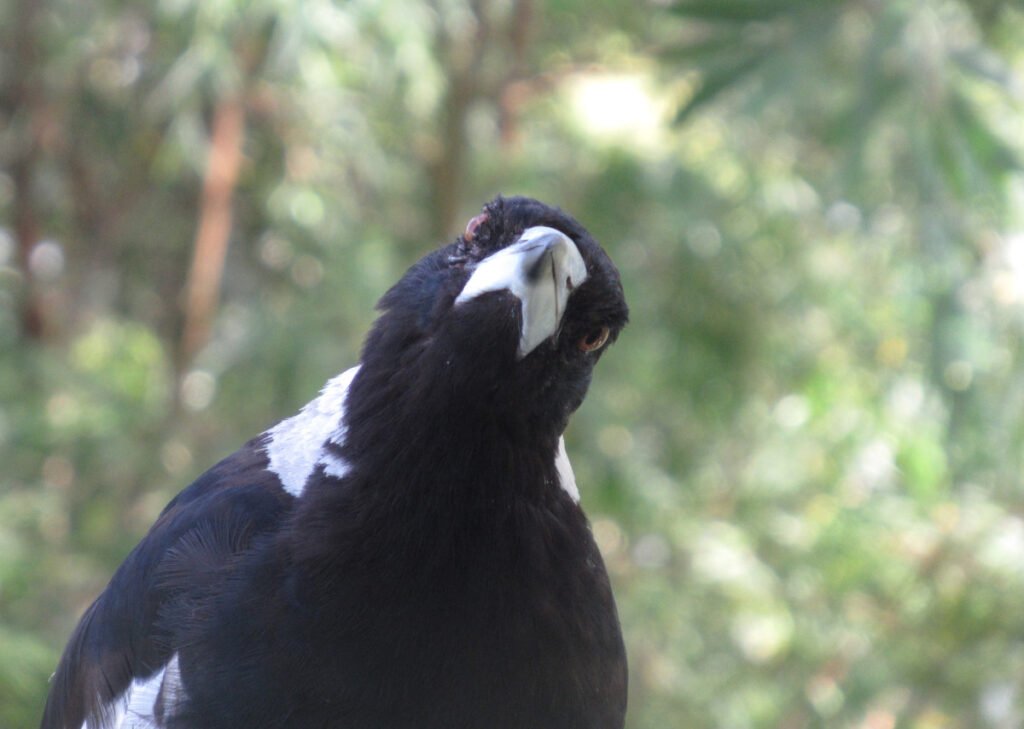
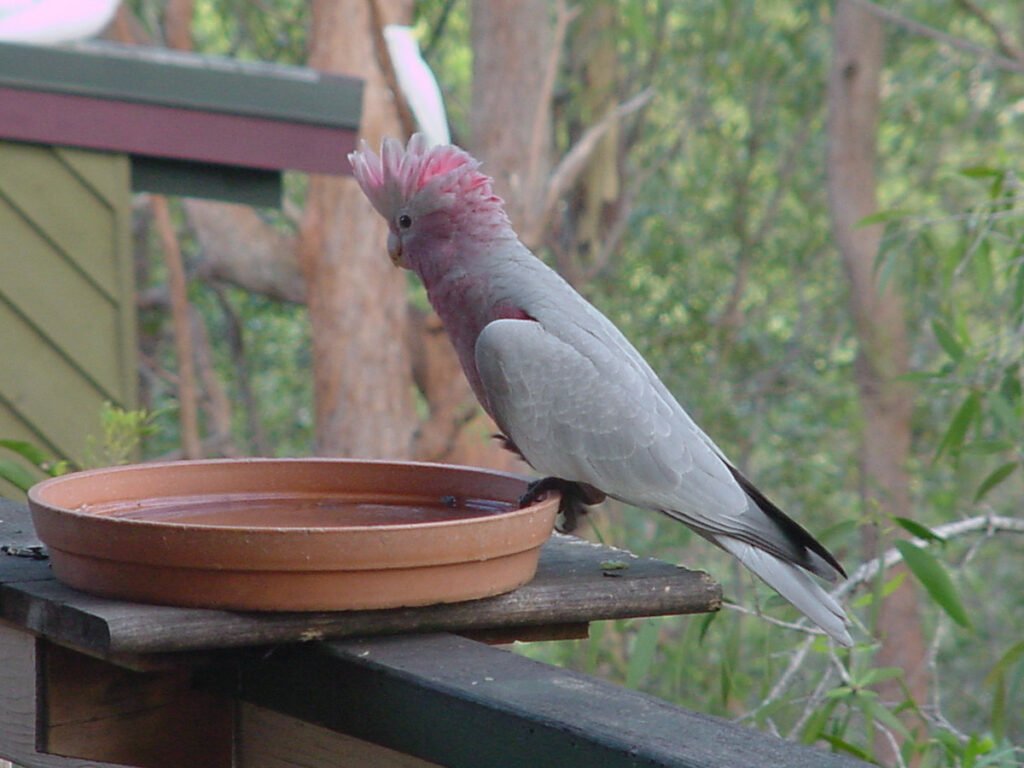
More recently, and especially over the past few years of isolation from friends and family, I found that I missed the close connection to wild animals and although I love insects and spiders, they aren’t quite as friendly! So again I began to hand out a little piece of fruit to our local larrikins, the rainbow lorikeets.
On most days, the lorikeets and other honeyeaters hang around my remnant bushland-style backyard feeding on local species of banksia, hakea and eucalypt flowers, as well as the grevilleas and bottlebrushes planted by previous owners. I only put snacks out for them occasionally when they come over to the hanging basket on my verandah. This makes my feeding protocol intermittent and casual which helps to stop pest species or other undesirables dominating the bird feeder.
Most of the time magpies prefer to forage for themselves. ‘Ours’ generally only come for supplementary feeds when in springtime they have extra mouths to feed – but they do like to mark the edge of their territory, which coincides with ours, with a pretty wake up tune in the early morning.
Late this summer, I noticed fewer plants flowering and the birds were checking out the bird feeder more often. Even the female/juvenile satin bowerbirds grab the occasional grape when there’s little else around. Now into Autumn, my old man banksia (Banksia serrata) is flowering profusely, and the honeyeaters aren’t at all interested in anything I might offer them.
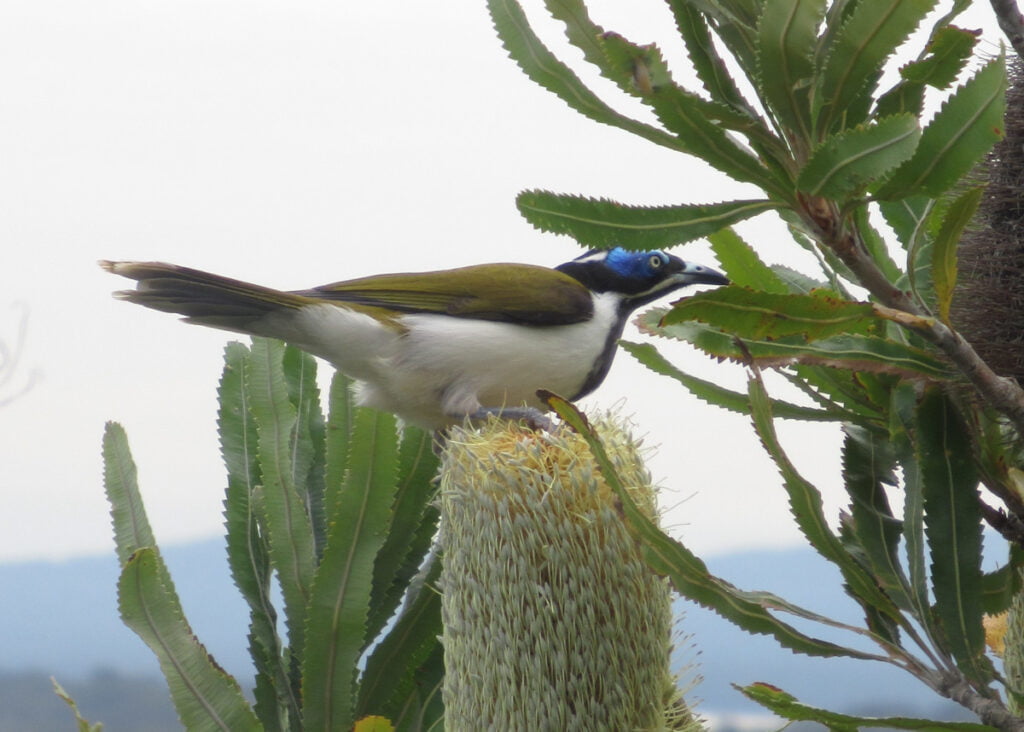
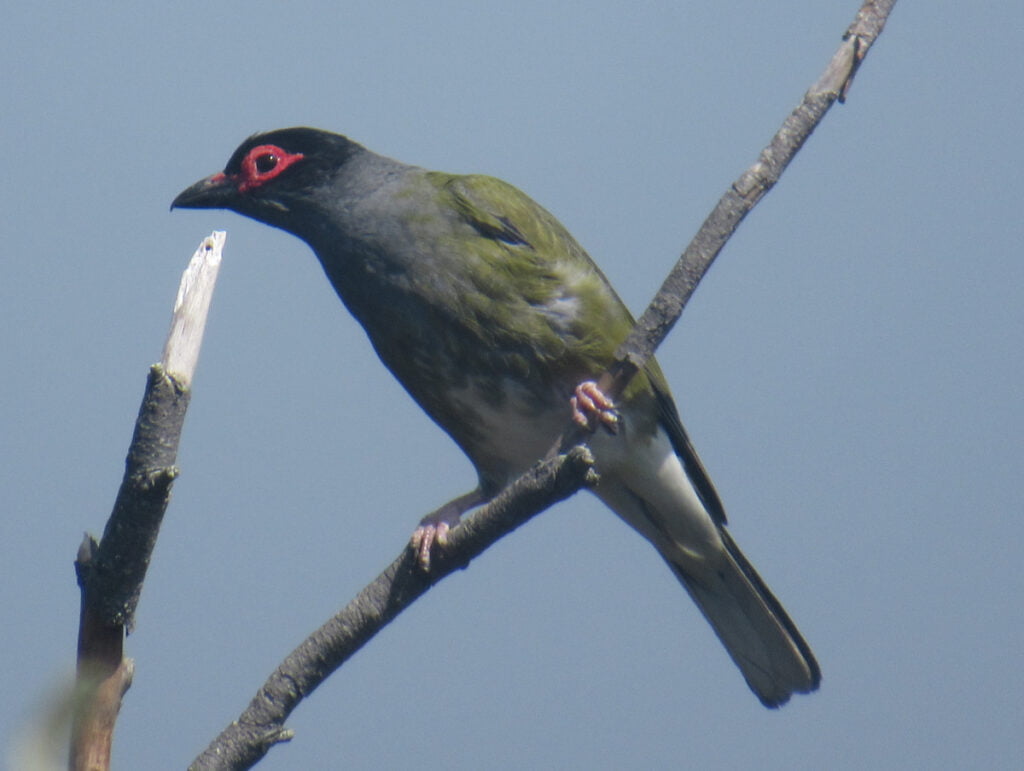
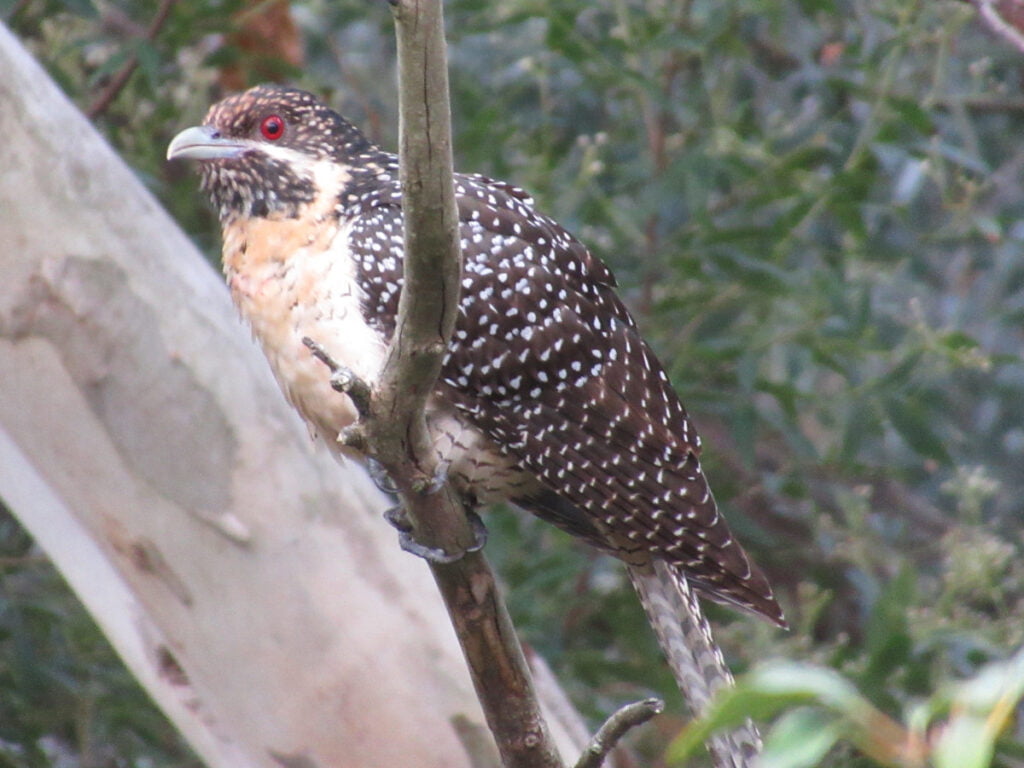
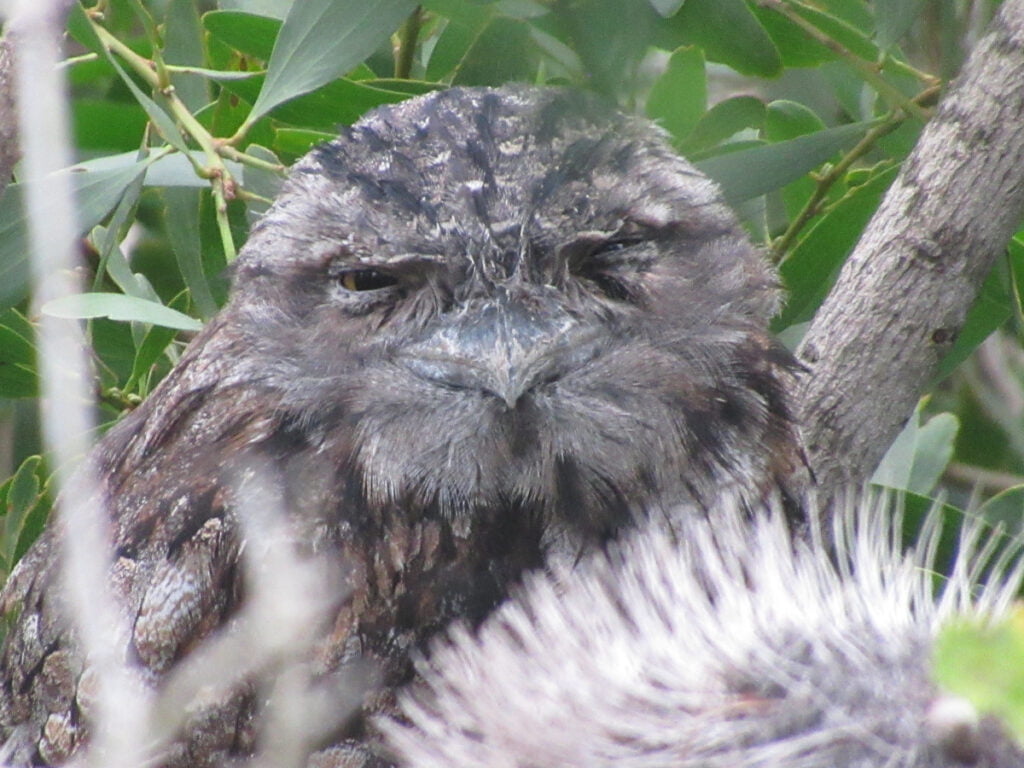
Reasons why you should not …
So why are there so many outspoken critics of bird feeding in Australia when in the UK and America it is actively encouraged by the RSPB, Birds Canada and Audubon Societies where millions of people install bird feeders in their gardens?
Murdoch University’s ‘Healthy Wildlife, Healthy Lives’ project is focused on the potential harm that can be caused to wildlife through interactions with people. Supplementary feeding is discouraged as it can lead to ‘nutritional imbalances, increase the risk of disease, and lead to a disruption in natural animal behaviour’. Other consequences of feeding have been purported to lead to dependency on people and dominance by already common birds causing an imbalance in nature.
In his book, ‘Feeding the birds at your table’, Professor Darryl Jones discusses some of the reasons cited by opponents of bird feeding and ranks their significance based on many years of research and surveys. Here is a brief summary including my own observations:
- Spread of disease – this is the most serious concern at birdfeeders, so you must clean and dry your dish thoroughly at least once a day with vinegar. The highly infectious Psittacine beak and feather disease affects parrot species and can be more readily transmitted at feeding stations than in the wild. If you’ve ever seen a balding sulphur-crested cockatoo afflicted with this disease, it is a very sad sight and makes you think carefully about our responsibility around bird feeding. You can’t control who will come to the bird feeder. It will inevitably attract possums, predators and pests including the night shift (mice, cockroaches, rats). Your feeding process needs to take this into account and not become a free for all. Above all, empty and clean the dish at the end of the day or remove it if possible. Feeding 2 or 3 birds at a time in a controlled way is different than attracting dozens to one spot which must be avoided at all times. Darryl Jones emphasises that ‘feeding to attract mass concentrations of birds …. represents the very opposite of the sustainable, ethical and low-risk bird feeding I am hoping to encourage.’
- Nutritional value – ensuring that the right food is offered to the right bird is paramount. Do not offload your leftovers and assume that because the birds eat it it must be OK. Only small snacks should be offered – do not overfeed. Never feed processed foods or anything sugary or salty. Black sunflower seeds are high in oil – never offer these to rainbow lorikeets. Bread is banned, and mince lacks calcium and is too fatty. The cheap ‘wild bird’ seed sold in supermarkets does not adequately replace native seeds that parrots and granivores might consume. There is information out there on what is considered OK to feed and where to get it, but it is not easy to find.
- Dominance – this is much less of an issue than the two above. The research to prove that dominant species will become more common because we feed them is sparse. These species are already domineering by nature and will chase smaller birds in and around their bushland territories and in your garden’s grevilleas. Despite the issues with noisy miners driving out small birds in bushland, they don’t have any interest in dominating my birdfeeder.
- Dependency – as long as you don’t over feed, dependency should not be a problem. As in nature, birds don’t rely on just one food source and the majority of their daily diet is still natural. It also helps if you can avoid feeding at the same time each day – give them time to forage naturally first thing in the morning. It’s a complex picture but there is no evidence that birds become dependent on the food we provide (except in extreme conditions such as severe snow or drought or after fire). I’ve noticed that we have more birds visit after a bout of bad weather presumably because they have been unable to feed properly for several days in a row.
With weather events increasing in frequency and severity – fire, flood or drought and extreme wind – when birds cannot forage or there is a scarcity of natural food, is it really so wrong to give them a helping hand-out?
The Human Factor
We’ve talked about the birds – what about the people? One of the key findings is that backyard birdfeeding is more about us than the birds. Who doesn’t enjoy the endearing eyes of the king parrot or beautiful tone of the pied butcherbird – remember the Close Encounters / Symphony of the Earth soundtrack?
I have learned a lot from being in such close proximity to wild birds. I probably spend more time with them at different times of day in every season than most researchers or conservationists. I see the interactions between birds of the same or different species, I also notice how all ‘pecking orders’ aren’t the same and importantly, I have realised that you can’t make generalisations about an animal’s behaviour. Individuals do not display the same behaviours just because, for instance, they are rainbow lorikeets. Some are shy – others bossy, some will share food – others won’t. Some magpies appear more intelligent than others – a bit like people really!
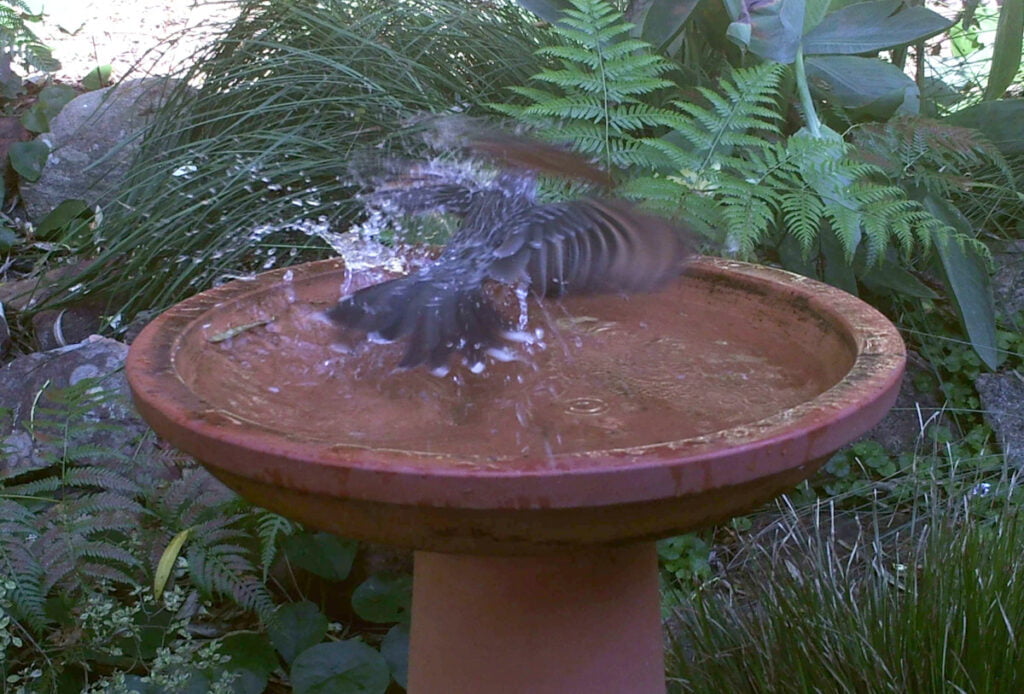
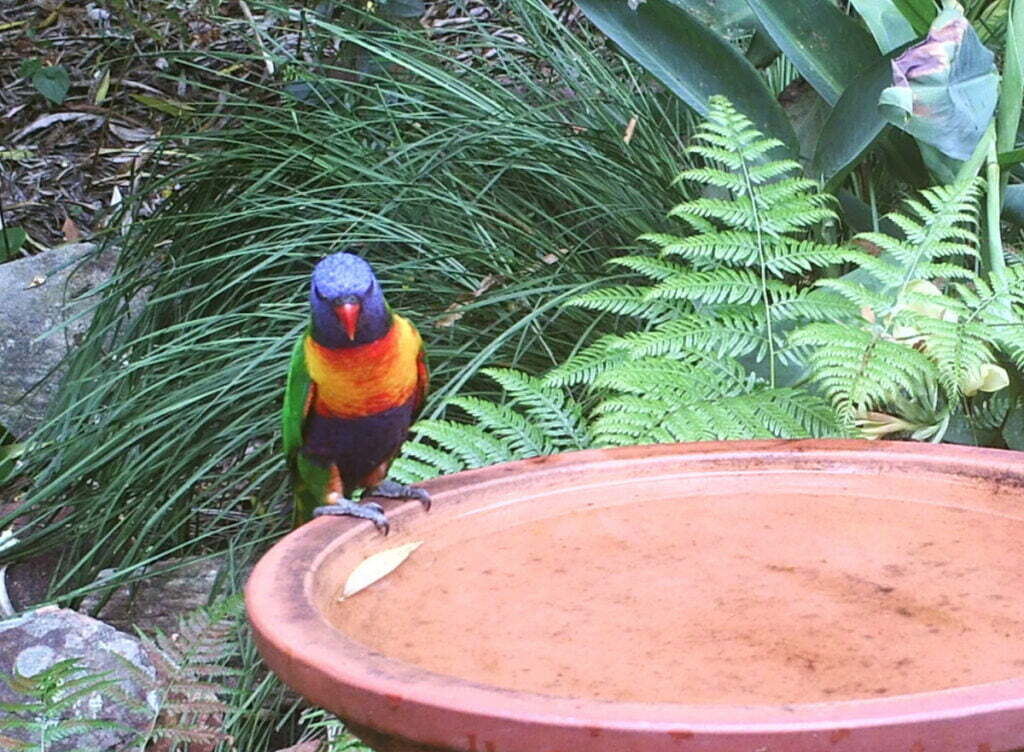
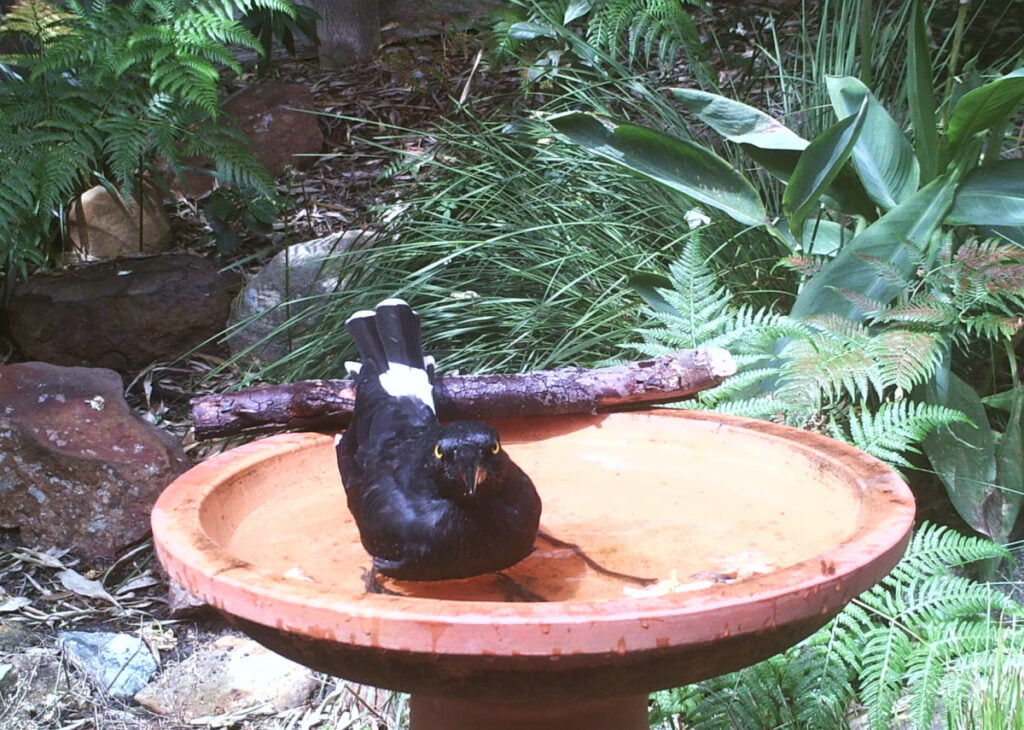
If a brief encounter with a wild animal means more people start appreciating each and every precious living thing on this earth and the desire to protect it, then why not let them?
If it feels important to your own health and wellbeing, especially during these stressful and often lonely times, try it. After all we are a part of nature and there are different ways for wildife to co-exist with us, some closer than others. It makes people feel special when a wild animal chooses to come into close proximity to us.
And for those of us suffering from solastalgia, a perceived friendship with our wild feathered friends is an uplifting experience. In the next EcoUpdate, we look at solastalgia – the feeling of distress associated with environmental change close to your home as described by Glenn Albrecht in 2003.
Providing a safe environment for your visitors is your foremost responsibility if you want to attract wildlife to your garden – whether through plantings, water or supplementary snacks. Having a free-ranging cat around is not ideal – birds need to retain their instinctive fear of cats and even if you don’t own one, being a magnet for birds you will automatically become a magnet for neighbourhood cats.
At our place, we have made our home their home – or maybe it’s the other way around, they were here first! I observe the birds go about their daily business, including breeding, feeding and chasing. The presence of so many flitting around the bushes and birdbath attracts quite a diversity of species (37 to date). At the risk of sounding anthropomorphic, they appear to recognise that this is a safe place for them. Yes noisy miners are here too – but their presence does not deter others. In fact, they produce a useful service which the other birds and I benefit from – alarm calls. This has often alerted us to the presence of a neighbour’s cat skulking in the undergrowth or a python curled up in the tree.
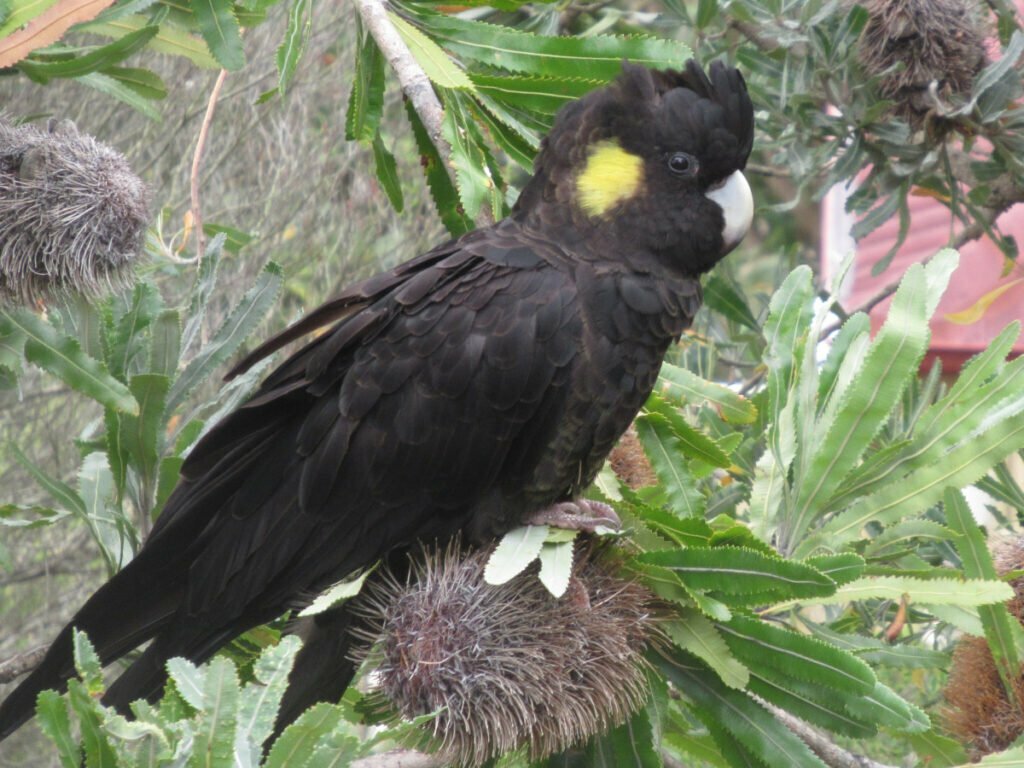
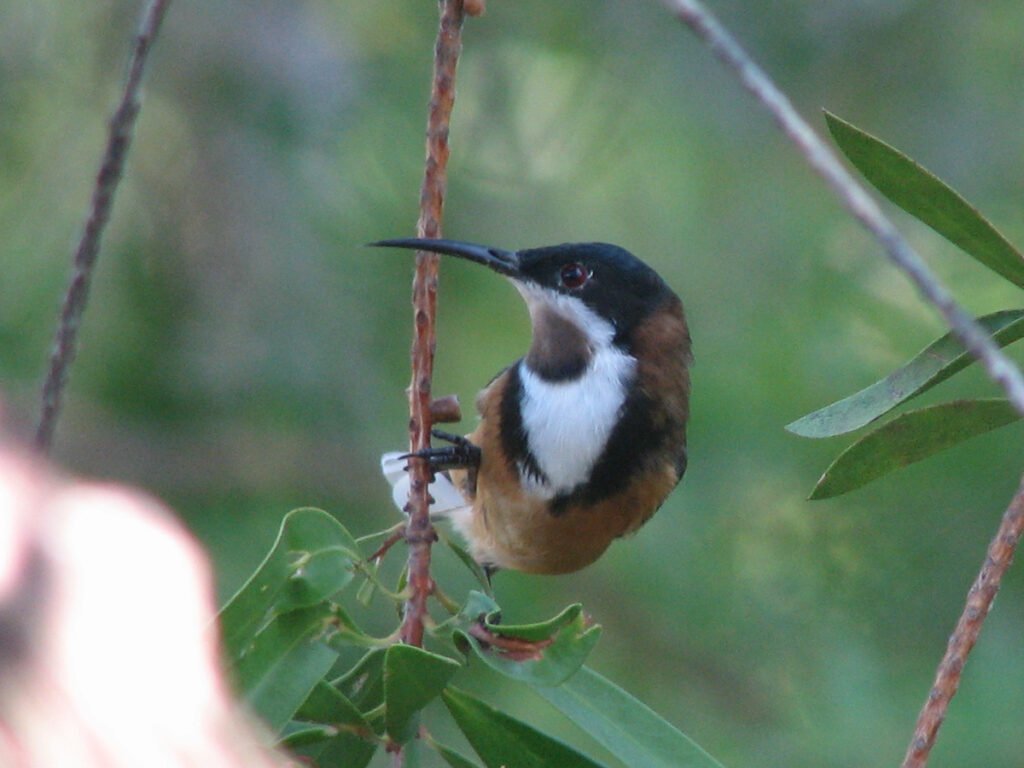
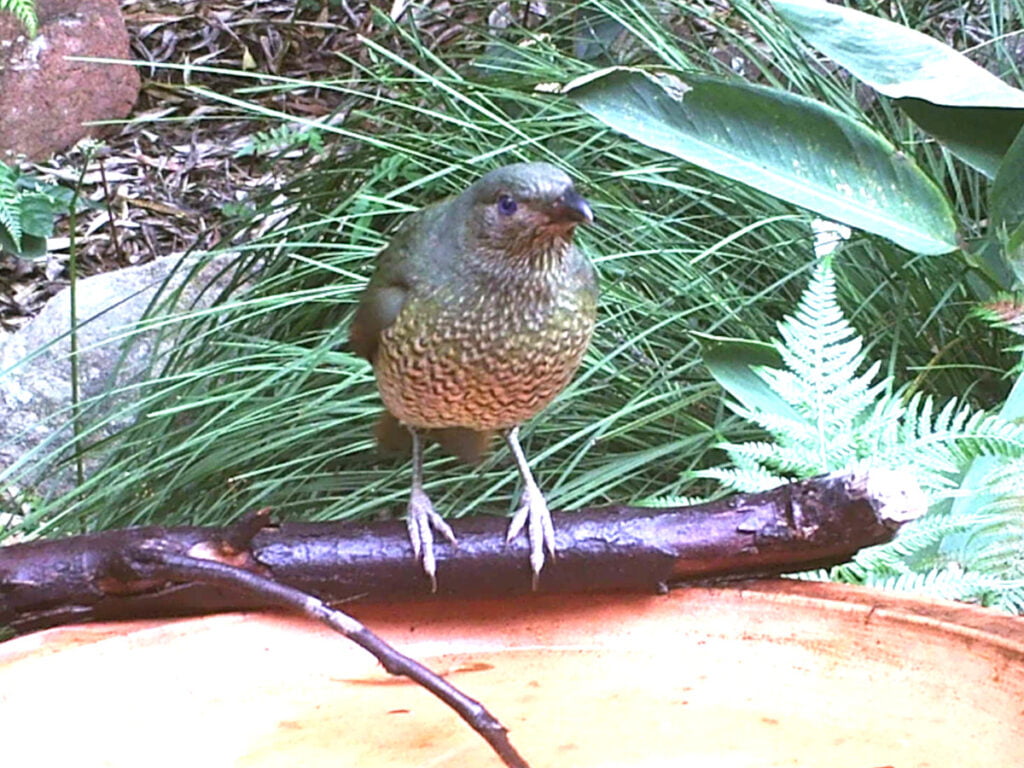
We hear plenty about the importance of using native plants in your garden to attract birds and other wildlife. There is a proliferation of spectacular flowering grevilleas and bottlebrushes in nurseries which are marketed as ‘bird-attracting’ – but be aware these may simply increase numbers of noisy miners and rainbow lorikeets. Smaller less showy natives that are bushy and prickly will suit small honeyeaters like the eastern spinebill. Soon we will provide a list of Port Stephens plants to help make yours a wildlife-friendly garden suited to our area.
If you enjoy watching birds, then there’s nothing more cheerful than a well-placed bird bath. The variety of swimming techniques will keep you (and them) entertained for hours. Just be sure to position the bird bath in a safe place away from low vegetation where cats could hide and under a tree with overhanging branches.
If you watch our short video, you’ll see we have employed a juvenile pied butcherbird as our pool boy. I promise you, watching birds splash about is far more entertaining than watching them eat your food!
Take home thoughts for you …
In an ideal world, it might be better not to feed wild birds – however many people will do it anyway. Maybe we should engage with the broader bird-feeding community and instead of judging them, spread the word about doing it responsibly. (For Wham fans it simply means ‘If you’re gonna do it, do it right – right?’)
If you’re reading this, the chances are that you like birds and wouldn’t knowingly do anything to harm them. As an issue, it’s not black and white like some of the birds we feed. Bird feeding is neither entirely right nor wrong – but there is a right or wrong way of doing it.
So if you like, follow our tips and take responsibility for the safety and wellbeing of the birds in your patch. Don’t encourage them if there are cats nearby, feed the right food for the right species, only provide irregularly-spaced snack-sized bits and above all Wash the Dishes!
I’ve provided some pros and cons – please make your own mind up, do more research and see what’s most applicable in your situation and your garden. And if unsure, err on the side of caution and do not feed.
Further reading and references:
Professor Darryl Jones is a behavioural ecologist in the fields of urban ecology and wildlife management at Griffith University who was inspired to write two books on the subject – he explains why:
‘One of the unfortunate legacies of the strong opposition to feeding here has been the lack of Australia-specific information or advice on offer to tell them how to feed birds properly. There is nowhere that concerned feeders can find reliable information. That’s what prompted me to write Feeding the Birds at Your Table.’
Feeding the Birds at Your Table: a guide for Australia by Darryl Jones 2019 ISBN: 9781742236322
‘At last, a sensible, science-based guide to safely feeding wild birds in Australia.’ — Paul Sullivan, CEO, BirdLife Australia.
Feeding the Birds at My Table: why we feed wild birds and why it matters by Darryl Jones 2018 ISBN: 9781742235974
‘In this international exploration of what seems like a trivial topic, Darryl Jones offers big surprises.’ Tim Low, ecologist and author.
Useful Links
- Health Wildlife Healthy Lives – Murdoch University
- Talking Australia podcast – The truth about bird feeding. Interview with Darryl Jones.
- Have you ever felt solastalgia?
- Bird Bath Designs – Collectors Plant Fair – Clarendon NSW
- What to feed injured native wildlife, in the wake of natural disasters – Griffith University
- Feeding wildlife the no-nuisance way – Qld Government
- Is it OK to feed wild animals? – NSW Government
From Overseas
- ‘In 1977 one bird became the signature theme for intelligent life trying to contact us. Imagine the symphony if all the world’s creatures were allowed a voice.’ Listen and watch the video.
- Pet Food Manufacturers Association – Effects of UK Lockdown Period on Wild Bird Food Market
- Doses of Neighbourhood Nature: The Benefits for Mental Health of Living with Nature
- RSPB – Keep your garden birds healthy
- Science Daily – People who feed birds impact conservation
- The Cornell Lab – All About Bird, Feeding Birds
- The Cornell Lab – Bird Academy. Feeder Birds: Identification and Behaviour

